Tsitsikamma National Park: Your Safety Guide – 8 Essential Tips for a Smooth Trip
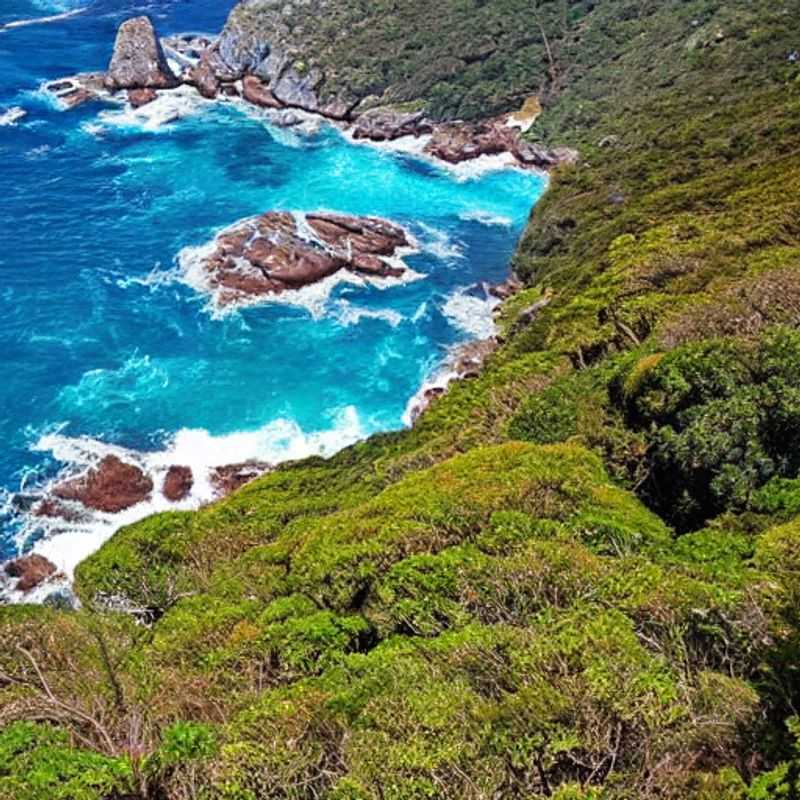
Tsitsikamma National Park Safety Guide 2026: Essential Tips for Your South African Adventure
Safety in Tsitsikamma National Park in 2026 requires a proactive approach, ensuring a memorable and secure visit. Park officials consistently update guidelines, so staying informed is paramount. A key consideration is understanding the weather patterns, which can change rapidly, especially in coastal areas. Always check the forecast before embarking on hikes or water-based activities. For those planning to traverse the famous Otter Trail, advance booking and permits are essential, and preparedness for its challenging terrain is crucial.
When exploring the park's diverse trails, particularly the coastal paths, be mindful of slippery surfaces and uneven ground. Wearing sturdy, closed-toe hiking shoes is highly recommended. The park is home to abundant wildlife; while sightings are a highlight, it's vital to maintain a safe distance and never feed the animals. This protects both your safety and their natural behavior.
For activities in and around the ocean, such as kayaking or snorkeling, always be aware of the tides and strong currents. Consider joining guided tours for a safer and more informative experience. Emergency contact numbers for the park should be readily available, and it’s wise to inform someone of your planned itinerary. Finally, remember to carry sufficient water and sun protection, as the South African sun can be intense.

Tsitsikamma National Park: A Guide to Safe & Smart Exploration
Staying Safe in Tsitsikamma: Practical Tips for Your Adventure
Crime in Tsitsikamma: Understanding the Risks & Minimizing Threats
Beyond the Tourist Trail: Discovering Authentic Tsitsikamma Safely
Exploring Tsitsikamma on a Budget: Safe & Economical Travel Strategies
Respecting Local Culture: Safety & Sensitivity in Tsitsikamma
Tsitsikamma's History & Heritage: A Journey Through Time (and Safely!)
Emergency Preparedness in Tsitsikamma: Planning for the Unexpected
Solo Travel in Tsitsikamma: Safety First, Adventure Second
Responsible Tourism in Tsitsikamma: Protecting the Park & Yourself
Sawubona! Welcome to Tsitsikamma National Park, a jewel of the Garden Route! Planning a family trip during the winter and spring months (June-October) is a fantastic choice. The weather is generally mild, perfect for hiking and exploring. Expect average temperatures ranging from 10°C to 20°C (50°F to 68°F), with occasional rain showers. Pack layers!
Crime rates in Tsitsikamma National Park itself are relatively low, but like any destination, it’s wise to be vigilant. Stick to well-lit areas, especially at night. Keep valuables secure and don't flaunt expensive items. Never leave belongings unattended in your car. The local police are helpful and readily available if needed.
Getting around is easy. Car rental is recommended for exploring the park's many trails and viewpoints. Expect to pay around R500-R800 (USD 28-45) per day for a reliable vehicle. Public transport is limited within the park itself, but readily available from nearby towns like Storms River.
Accommodation options range from campsites (R200-R400 (USD 11-22) per night) to comfortable lodges and guesthouses (R1000-R3000 (USD 56-168) per night), depending on your family's needs. Booking in advance, especially during peak season, is highly recommended.
Food is a delightful part of the experience! Embrace the local cuisine. Expect to find fresh seafood, hearty stews, and delicious biltong (dried meat). A family meal at a local restaurant could cost you around R500-R800 (USD 28-45). Picnics are a great cost-saving option – prepare sandwiches and snacks beforehand.
Activities abound! Hiking the numerous trails is a must; the Otter Trail is legendary but requires advanced booking and physical fitness. Shorter, family-friendly walks are plentiful. Expect to pay R100-R200 (USD 6-11) per person per activity for guided tours or entrance fees to certain attractions like the Storms River Suspension Bridge.
Tsitsikamma's Xhosa culture is rich and fascinating. Respect local customs, dress modestly when visiting villages, and always ask permission before taking photographs of people. You might encounter traditional music and dance performances, adding to the cultural immersion.
The natural beauty is stunning; the park boasts diverse flora and fauna, including the iconic African Blackwood tree, various bird species, and sometimes even glimpses of monkeys. The sounds of the ocean, birdsong, and the wind through the trees create a serene atmosphere. The architecture in the surrounding towns is mostly a blend of modern and colonial styles.
Remember to embrace the "slow travel" philosophy. Don't try to cram too much into your trip. Allow time for spontaneous exploration and unexpected encounters. A realistic budget for a family of four for a 7-day trip to Tsitsikamma could range from R10,000-R25,000 (USD 560-1400), excluding flights.
Enjoy your unforgettable family adventure in Tsitsikamma! Remember to respect the environment, leave no trace, and cherish the memories you create. Hamba kahle (travel well)!
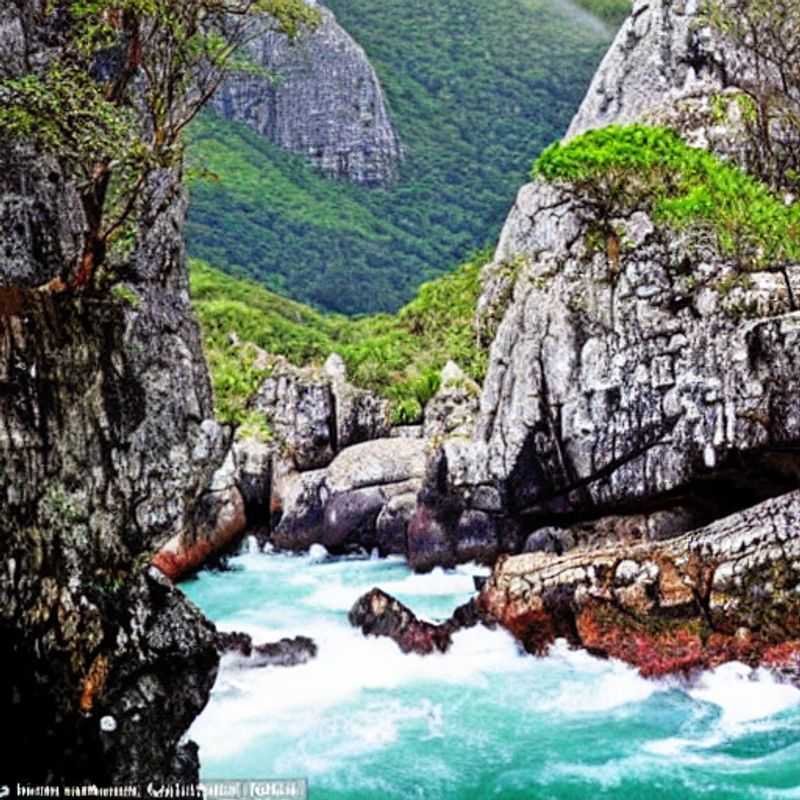
You may also like
Tsitsikamma's Charm: A Guide to Safe & Smart Travel Amidst South Africa's Political Landscape
Exploring Tsitsikamma National Park: Safety First, Adventure Always
Navigating South Africa's Political Climate: Your Safe & Rewarding Trip to Tsitsikamma
Unlocking Tsitsikamma: Budget-Friendly Adventures & Cultural Insights
Tsitsikamma National Park: Beyond the Tourist Trail – An Authentic South African Experience
Safe Travels in Tsitsikamma: Practical Tips & Local Wisdom
From Cape Town to Tsitsikamma: A Journey Through History & Nature (with Safety in Mind)
Tsitsikamma's Hidden Gems: Economical & Authentic Travel Experiences
Responsible Tourism in Tsitsikamma: Respecting Culture & Protecting the Environment
Understanding South Africa: Political Context & Safe Travel Practices in Tsitsikamma
Sawubona! Welcome to Tsitsikamma National Park, a jewel nestled along South Africa's Garden Route. As your guide, I want to ensure your family gap year adventure is safe, enriching, and unforgettable, especially during the transition from winter to spring (roughly August to October). Political stability in this region is excellent; South Africa boasts a well-established democracy and Tsitsikamma enjoys peaceful coexistence. You can relax, knowing the area is safe for families.
The weather during this period is generally mild and pleasant. Expect sunny days with average temperatures ranging from 15°C to 22°C (59°F to 72°F). Pack layers, as evenings can be cooler. The landscape is breathtaking—lush forests meeting the dramatic coastline. You'll see indigenous trees like the yellowwood and Outeniqua yellowwood, and perhaps even some playful monkeys in the trees!
Activities are abundant and budget-friendly. Hiking the numerous trails, ranging from easy strolls to challenging climbs, is free. Consider the Otter Trail (permit required, approximately R1,200 per person for a 5-day hike, book well in advance!), or shorter, family-friendly routes. The Storms River Suspension Bridge offers thrilling views (entry fee around R80 per adult, R40 per child). Kayaking or boat trips to view the coastline are available from approximately R500 per person. These prices can vary depending on the tour operator and duration.
When it comes to food, embrace the local cuisine! Try traditional South African biltong (dried cured meat), bobotie (a spiced minced meat bake), and potjiekos (a hearty stew). Many restaurants cater to families; expect to spend approximately R200-R400 per adult and R100-R200 per child for a meal.
Local culture is rich and welcoming. The Xhosa people are the dominant indigenous group in the region. Their traditions revolve around community and respect for nature. Observe their customs with respect, and feel free to engage in conversation (with appropriate introductions). You’ll hear Xhosa music in some local establishments – a vibrant and rhythmic sound.
Transportation is fairly easy within the park. Car rental is a convenient option, costing roughly R300-R500 per day, depending on the vehicle. Public transport is limited, but taxis are available. Plan your travel carefully to avoid costly last-minute arrangements.
To minimize costs, consider self-catering some meals. Groceries are readily available in nearby towns. Pack your own snacks and water for hikes to save money and reduce plastic waste. Camping is also a great option, offering more economical accommodation than lodges or hotels.
Remember: Engage with locals respectfully, learn a few basic Xhosa phrases ("Sawubona" - hello, "Enkosi" - thank you), and always be aware of your surroundings. Avoid displaying excessive wealth, and stick to well-lit and populated areas at night.
Estimated total cost for a 7-day family trip (2 adults, 2 children): This is a rough estimate and can vary significantly based on your accommodation choices, dining preferences, and activities. Allow for R15,000-R30,000 (approximately $800-$1600 USD). This includes accommodation (mix of camping and budget-friendly lodges), food, activities, transportation, and entrance fees.
Enjoy your Tsitsikamma adventure! Remember to embrace the unexpected, be open to new experiences, and create memories that will last a lifetime. Hamba kahle! (Go well!)
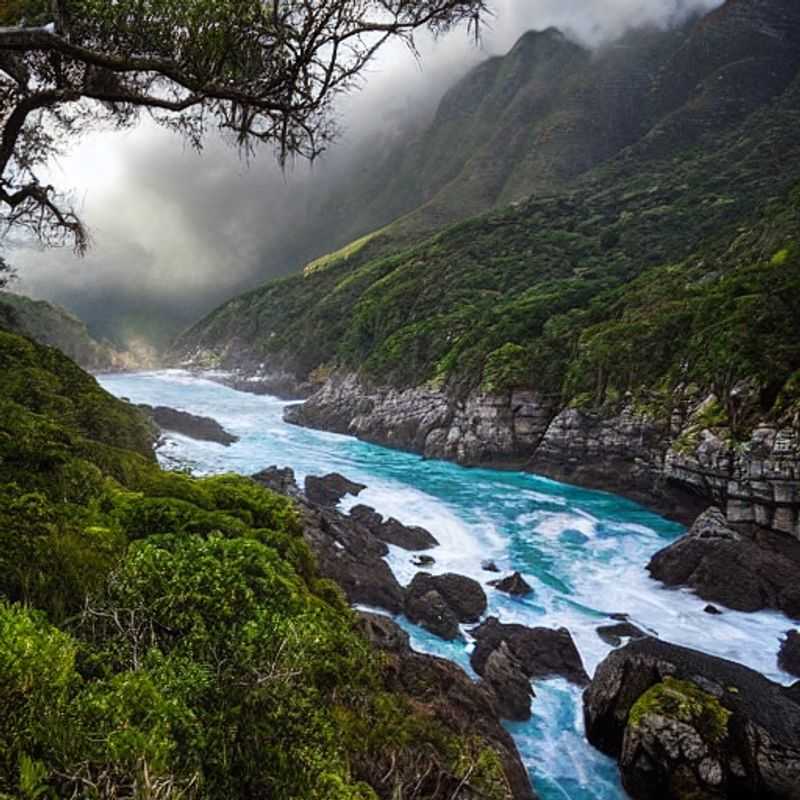
You may also like
Tsitsikamma's Natural Wonders: Staying Safe & Smart on Your Adventure
Navigating Tsitsikamma's Risks: A Practical Guide to Emergency Preparedness
Exploring Tsitsikamma Safely: Tips for Avoiding Tourist Traps & Finding Authentic Experiences
Tsitsikamma National Park: Understanding Natural Disaster Risks & Protecting Yourself
Budget-Friendly & Safe Travel in Tsitsikamma: Maximizing Your Adventure
Respecting Tsitsikamma's Culture & Environment: A Responsible Traveler's Guide
Emergency Contacts & Essential Gear for a Safe Tsitsikamma Trip
First Aid & Medical Advice for Your Tsitsikamma Adventure
Wildlife Encounters in Tsitsikamma: Safety Tips & Respectful Observation
Tsitsikamma's Coastal Hazards: Understanding & Avoiding Risks
Weather Preparedness in Tsitsikamma: Packing & Planning for All Seasons
Jambo! Planning a family adventure to Tsitsikamma National Park in South Africa between winter and spring (June to October)? As your expert guide, I'll help you navigate this beautiful yet potentially unpredictable region safely and economically. Remember, safety first! Tsitsikamma, meaning "place of much water," experiences strong winds and occasional heavy rainfall, especially during spring.
Natural Disaster Risks: The primary concern is coastal flooding during heavy storms. Be aware of weather forecasts and heed any warnings from park rangers. Landslides can also occur after heavy rainfall, particularly on hiking trails, so stick to marked paths and avoid hiking during or immediately after heavy rain. Wildfires are a risk, especially in drier months, so be careful with campfires and follow park regulations.
Emergency Preparedness: Before you go, pack a well-stocked first-aid kit, including any necessary medication. Inform someone of your itinerary and expected return time. Download a reliable offline map of the park. Carry a charged cellphone (though service may be patchy), and consider a satellite messenger for remote areas. Familiarize yourselves with emergency contact numbers within the park and in the nearby towns of Storms River and Nature's Valley.
Exploring Efficiently and Economically: Tsitsikamma offers a range of activities. Hiking the Otter Trail (permit required, approximately R1100 per person for 5 days) offers stunning coastal views but requires fitness and pre-booking. A cheaper option is to explore shorter trails like the Waterfall Trail (free). You can rent kayaks for exploration of the Storms River mouth (approximately R350-R500 per hour depending on the boat type and time). Consider self-catering accommodation (from R500 per night for a family unit) to save on dining costs. Food shopping can be done in Storms River (expect to spend around R500-R800 per day for a family).
Local Culture and Traditions: The area is home to the indigenous Xhosa people whose culture is rich in storytelling and music. The sounds of the ocean and birdsong are ever-present, creating a peaceful atmosphere. Architecture is mainly modern in the towns, with some eco-friendly lodges integrating with the natural setting. Expect friendly and helpful locals. The cuisine blends traditional South African dishes with seafood; you'll find delicious seafood stews, braaivleis (barbecues), and bobotie (a spiced mincemeat dish). Indigenous plants like fynbos (a unique shrubland) and proteas are abundant.
Total Estimated Cost (5 days/4 nights): Accommodation: R2000 - R2500, Activities: R500 - R2000 (depending on choices), Food: R2000-R3200, Transport (assuming car hire or using public transport): R1000 - R1500. Total estimated cost: R6500-R9200 (this is just an estimate, and the actual cost will vary based on your choices and family size).
Remember to always be respectful of the environment and local customs. Enjoy the incredible natural beauty of Tsitsikamma, but remember to be prepared for the unexpected! Safe travels!
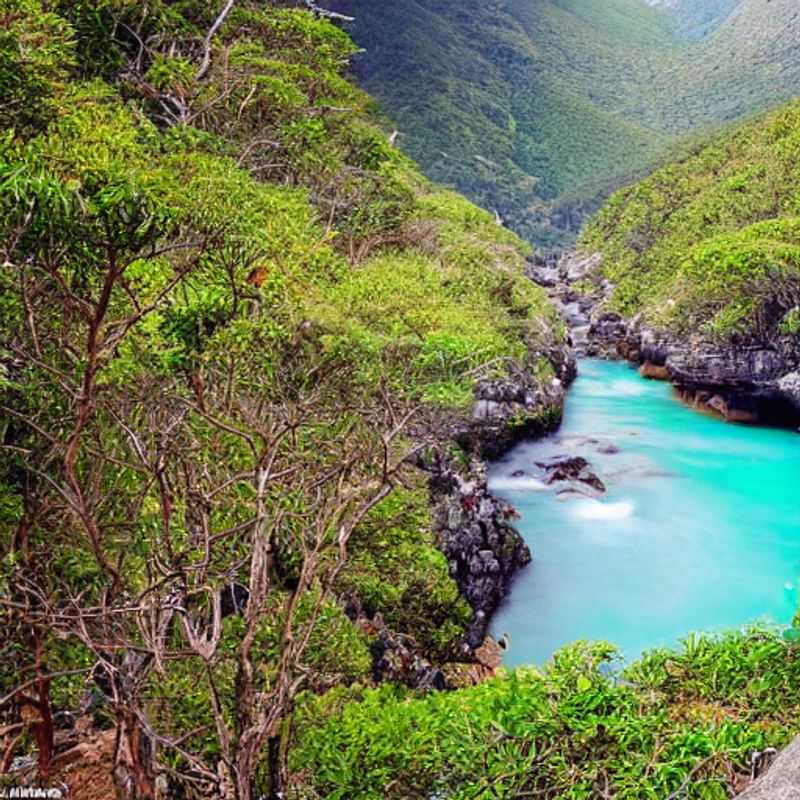
You may also like
Tsitsikamma's Trails: A Guide to Health & Safety on Your South African Adventure
Staying Safe & Healthy in Tsitsikamma National Park: Your Expert's Tips
Exploring Tsitsikamma: Practical Health & Sanitation Advice for Budget Travelers
Tsitsikamma National Park: Avoiding Tourist Traps & Prioritizing Your Well-being
Unlocking Tsitsikamma: A Cultural Journey with Health & Safety in Mind
Health, Hygiene & Happiness: Your Essential Guide to a Safe Tsitsikamma Trip
Tsitsikamma's Hidden Gems: Safe & Sustainable Travel for the Curious Explorer
Navigating Tsitsikamma: Health & Safety for First-Time Visitors
Responsible & Safe Exploration: A Practical Guide to Tsitsikamma National Park
Adventure in Tsitsikamma: Protecting Your Health While Embracing the Culture
Jambo! Planning a family adventure to Tsitsikamma National Park in South Africa between winter and spring? As your friendly neighbourhood tour guide, let me share some insider tips to make your trip safe, enriching, and budget-friendly.
Firstly, let’s talk about health and sanitation. Tsitsikamma, while generally safe, requires basic precautions. Tap water is generally safe to drink in most areas, but bottled water is readily available and affordable (around R10-R20 per bottle). Food hygiene is generally good in established restaurants and lodges, but always exercise caution with street food, especially for children. Mosquitoes can be present, particularly near water bodies, so pack insect repellent. Medical facilities are available in nearby towns like Storms River Village and Plettenberg Bay, but minor ailments are best treated with your own first-aid kit.
The weather during winter (June-August) is mild and dry, perfect for hiking and exploring. Spring (September-November) brings warmer temperatures and more rainfall, so pack accordingly. Expect daytime temperatures ranging from 15°C to 25°C (59°F to 77°F), depending on the season.
Tsitsikamma boasts stunning coastal scenery, with dramatic cliffs, lush forests, and beautiful beaches. The local Xhosa culture is rich and vibrant. You might encounter traditional Xhosa music at local events or restaurants. Their cuisine often features hearty stews and maize-based dishes. Expect a friendly atmosphere with locals generally welcoming tourists.
To explore efficiently and economically, consider self-catering accommodation (around R500-R1500 per night, depending on size and amenities). This lets you prepare some meals, reducing dining costs. Day trips within the park often involve hikes on well-maintained trails, requiring only sturdy shoes and enthusiasm. Entrance fees to Tsitsikamma National Park are approximately R80 per adult and R40 per child.
For activities, the popular Otter Trail hike is a multi-day experience and requires booking well in advance. It costs around R1000-R2000 per person, depending on the season. Other activities like bungee jumping, zip-lining, and boat trips can cost between R500 and R1500 per person. Dining out for a family of four could cost anywhere from R400-R800 per meal, depending on your choices.
Transportation within the park is mostly done by car or on foot. Car rental costs vary greatly depending on the rental company and duration. Expect to pay anything between R300-R800 per day for a family-sized car. You can also utilize shuttles available for particular trails and activities for an additional cost. Public transport is limited in the park itself but readily available to and from nearby towns.
A sample budget for a 5-day family trip (2 adults, 2 children), excluding flights, could range from R10,000 to R25,000, depending on your accommodation choices and activities. This includes accommodation, park entrance fees, some meals, and a few paid activities. Remember to factor in travel insurance and potential unexpected costs.
Remember, the real magic of Tsitsikamma lies in experiencing its natural beauty and engaging with the local culture, often found away from heavily touristed areas. Embrace the slow pace, enjoy the fresh air, and create memories that will last a lifetime. Safe travels!
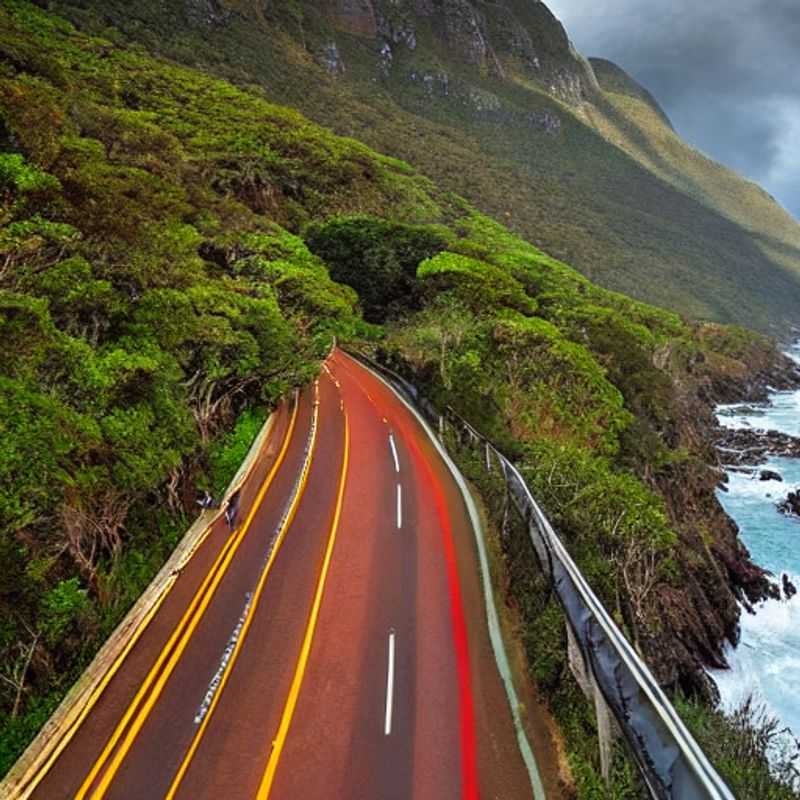
You may also like
Tsitsikamma Travel: Navigating the Park Safely & Smartly
Exploring Tsitsikamma: A Guide to Safe & Efficient Transportation
Tsitsikamma National Park: Your Safety Checklist for a Smooth Trip
Budget-Friendly Adventures in Tsitsikamma: Transportation Tips & Tricks
Unlocking Tsitsikamma: Safe and Affordable Transport Options
Beyond the Tourist Trail: Safe & Sustainable Transport in Tsitsikamma
Tsitsikamma's Hidden Gems: Safe Travel & Cultural Immersion
Respecting Tsitsikamma: Responsible Transport & Cultural Sensitivity
Your Tsitsikamma Adventure: Prioritizing Safety & Efficiency on the Road
Navigating Tsitsikamma's Infrastructure: A Practical Guide to Safe Travel
Sawubona! Welcome to Tsitsikamma National Park, a jewel along South Africa's Garden Route, perfect for a family gap year adventure between winter and spring (June to October). The weather during this time is generally mild, with sunny days and cool evenings. Expect average temperatures ranging from 10°C to 20°C (50°F to 68°F). Pack layers!
Getting around Tsitsikamma is relatively easy. The park boasts a well-maintained network of roads suitable for regular cars. Car rental is advisable for exploring the park independently at your own pace. Expect to pay around ZAR 500-800 (approximately $28-$45 USD) per day for a mid-sized car. Public transport is limited within the park itself, relying mainly on infrequent shuttles, not ideal for family travel planning.
Safety is paramount. Tsitsikamma is generally safe, but common sense precautions are essential. Keep valuables secure, be aware of your surroundings, especially at night, and stick to well-lit and populated areas. Inform someone of your hiking plans and expected return time. Always check weather conditions before embarking on any hikes, especially coastal ones, as the weather can change quickly.
Accommodation options vary from campsites (ZAR 300-500 per night) to comfortable lodges (ZAR 1000-3000 per night), catering to various budgets. Booking in advance, particularly during peak season, is strongly recommended.
Food in Tsitsikamma blends local South African flavors with international influences. Expect to find fresh seafood, hearty stews (potjies), and braaied (barbecued) meats. Restaurants in the area offer various price points. A casual meal for a family of four could range from ZAR 400 to 800. Self-catering is also a budget-friendly option, particularly if you choose camping.
Explore activities like the Storms River Suspension Bridge (entrance fee: ZAR 80 per adult, children are cheaper), hiking trails (many are free), and the Otter Trail (permit required, booking essential, ZAR 750-1000 per person), and kayaking tours which range from ZAR 500 to 1500 per person. Remember to factor in costs for snacks and drinks during your hikes and activities. These often run between ZAR 100 to 300 per person per day.
The local Xhosa culture is rich in traditions and storytelling. You might encounter traditional Xhosa music, often played during celebrations or gatherings. The sounds of nature – the ocean, birdsong – dominate the park's soundscape. Common plants include fynbos (indigenous shrubs) and various coastal vegetation. You may see local pets such as dogs and cats.
The architecture in Tsitsikamma's towns and villages tends to be a blend of modern and traditional styles. Tourists in the park are generally relaxed and adventurous, valuing outdoor pursuits and the natural environment. Embrace the laid-back atmosphere and connect with the park's beauty.
Sample 5-day trip cost for a family of four (excluding flights): Car rental (ZAR 4000), Accommodation (ZAR 5000), Activities and Entrance fees (ZAR 3000), Food (ZAR 2000), Miscellaneous (ZAR 1000) = ZAR 15,000 (approximately $840 USD). This is a rough estimate; your actual cost will vary depending on your choices and spending habits.
Remember to respect local customs and traditions, and enjoy the incredible natural beauty and cultural richness Tsitsikamma has to offer! Hamba kahle! (Safe travels!)
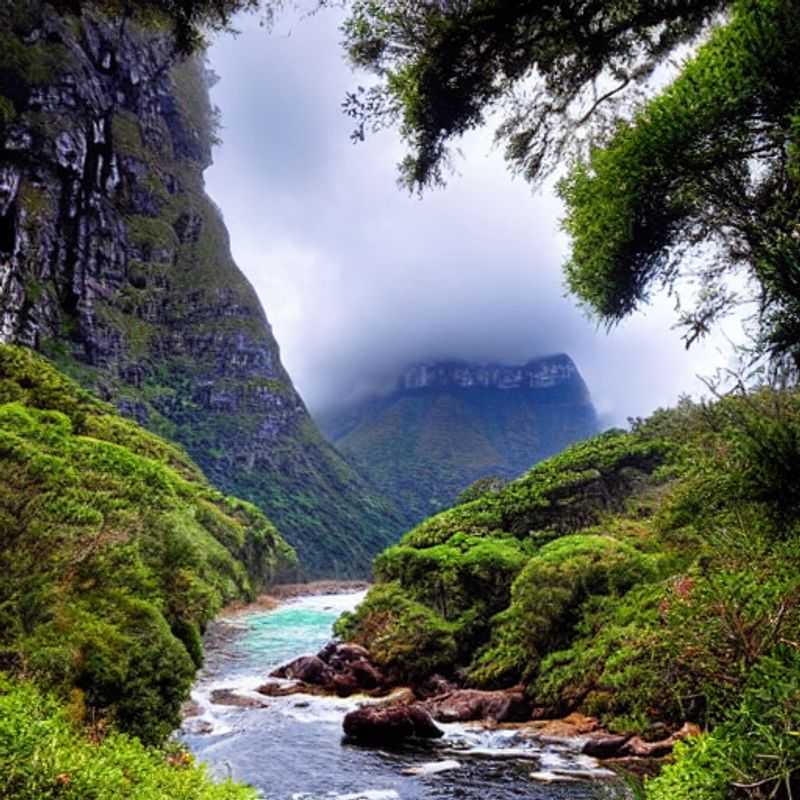
You may also like
Unlocking Tsitsikamma: Navigating Culture, Language, and Safety for an Authentic South African Adventure
Tsitsikamma Travel Tips: Overcoming Language Barriers and Staying Safe
Beyond the Tourist Trail: Safe & Smart Cultural Immersion in Tsitsikamma National Park
Respecting the Culture: Essential Etiquette for a Smooth Tsitsikamma Trip
Tsitsikamma's Hidden Gems: Budget-Friendly Exploration and Local Encounters
Staying Safe in Tsitsikamma: Practical Advice from a Local Expert
Cultural Sensitivity & Safety in Tsitsikamma: A Traveler's Guide to Respectful Exploration
Decoding Tsitsikamma: Understanding Local Customs for a Safe and Meaningful Journey
Affordable Tsitsikamma: Tips for Economical Travel & Authentic Experiences
Your Tsitsikamma Adventure: Prioritizing Safety Without Sacrificing Cultural Immersion
Sawubona! Welcome to Tsitsikamma National Park, a jewel of the Garden Route in South Africa. As your guide, I'll help you navigate this stunning area with your family, minimizing cultural misunderstandings and maximizing your experience during the transition between winter and spring (roughly June to October).
The weather during this period is generally mild, with average temperatures ranging from 10°C to 20°C (50°F to 68°F). Pack layers, as conditions can change quickly. Expect some rain showers, so waterproof jackets are essential.
Language: While English is widely spoken, particularly in tourist areas, learning a few basic isiXhosa phrases will be greatly appreciated by the locals. A simple "Sawubona" (hello) and "Enkosi" (thank you) go a long way. Many park staff are multilingual, but showing initiative with a local phrase enhances your interactions.
Culture: South African culture is rich and diverse. Respect for elders is paramount. Expect warm hospitality but be mindful of personal space; avoid overly familiar touch. Many local communities have strong family ties and community involvement. Observing these cultural nuances adds depth to your experience.
Food: Embrace the delicious local cuisine! Expect hearty meals featuring fresh seafood, like grilled snoek (a local fish), or bobotie (a spiced mincemeat dish). Try a traditional potjiekos (a stew cooked in a three-legged cast iron pot). Street food markets offer more affordable options. Expect to spend around R300-R500 (approximately $17-$28 USD) per day on food for a family of four.
Activities: Tsitsikamma offers activities for all ages. The Storms River Suspension Bridge walk is a must-do (entrance fee: around R100 per adult, children often have discounted rates). Kayaking tours along the coastline are exhilarating but can be pricey (expect to pay R800-R1200 ($45-$67 USD) per family). Hiking trails cater to different fitness levels, offering breathtaking views. Remember to bring sun hats and plenty of water.
Transportation: Renting a car is highly recommended for exploring the park and surrounding areas efficiently. Car rental can cost between R300-R500 ($17-$28 USD) per day. Alternatively, guided tours are available but will be more costly. Public transport is limited within the park itself.
Accommodation: Choose from various options, ranging from camping sites (budget-friendly, around R200-$300 ($11-$17 USD) per night) to comfortable lodges (prices range widely, from R1000 ($56 USD) to several thousand rand per night). Consider your family’s preferences and budget.
Avoiding Tourist Traps: Steer clear of overly expensive restaurants in highly touristy areas. Engage with local communities; you'll find more authentic and affordable experiences.
Total Estimated Cost: A seven-day trip for a family of four, including accommodation, meals, activities, and transportation, could range from R15,000 to R30,000 (approximately $840 - $1680 USD). This is a rough estimate and can vary depending on your choices.
Remember, flexibility and open-mindedness are key to a successful trip. Embrace the unexpected, learn from the locals, and create unforgettable memories! Enjoy your adventure in Tsitsikamma!
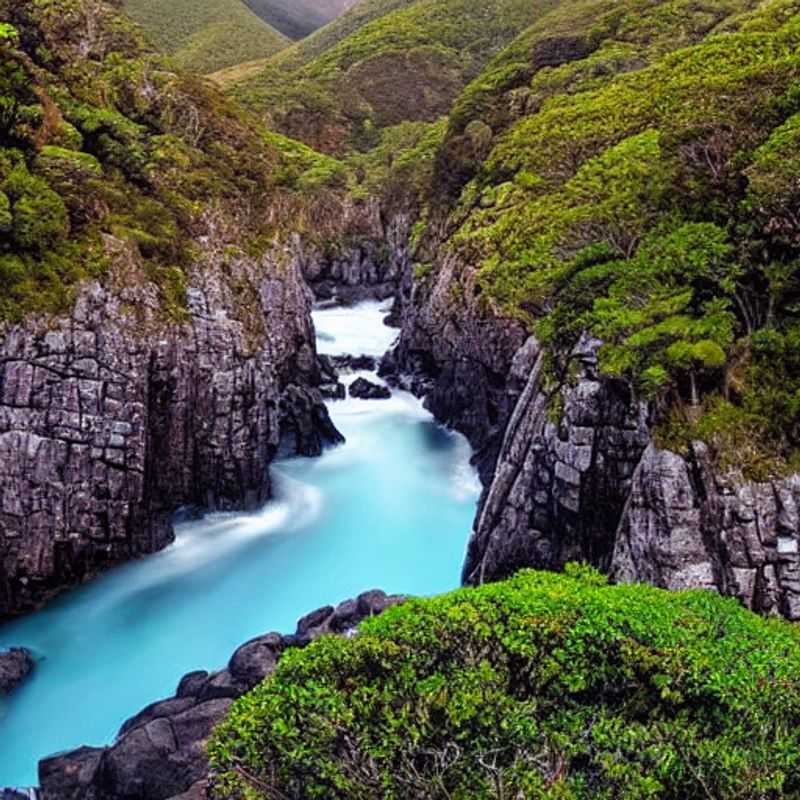
You may also like
Tsitsikamma National Park: Your Safety Guide for an Unforgettable Adventure
Exploring Tsitsikamma Safely: Travel Advisories & Smart Tips
Unlocking Tsitsikamma: Practical Advice for Budget-Conscious Travelers
Beyond the Tourist Trail: Discovering Authentic Tsitsikamma
Tsitsikamma's Hidden Gems: Off-the-Beaten-Path Experiences
Respecting Culture, Ensuring Safety: A Tsitsikamma Travel Ethos
Navigating Tsitsikamma: Essential Safety Practices & Local Insights
Tsitsikamma National Park: Staying Safe & Saving Money on Your Trip
From Adventure to Relaxation: A Balanced Tsitsikamma Itinerary
The History of Tsitsikamma: A Journey Through Time & Culture
Sawubona! Greetings from your friendly South African tour guide! Planning a family adventure to Tsitsikamma National Park between winter and spring? Excellent choice! This stunning coastal park offers breathtaking scenery and unique experiences, perfect for gap year travelers seeking something authentic. Remember to check the official South African government website and your own country's travel advisories for up-to-date safety information before you go. Generally, Tsitsikamma is safe, but common sense precautions always apply.
The weather during the transition from winter (June-August) to spring (September-November) is generally pleasant, with mild temperatures and less rain than summer. Expect daytime highs ranging from 15-25°C (59-77°F). Pack layers as evenings can be cooler.
Tsitsikamma’s culture is deeply rooted in the indigenous Khoisan and Xhosa people. You'll encounter a warm and welcoming atmosphere. Respect local customs – dress modestly when visiting villages and always ask permission before taking photographs of people. Try some delicious local cuisine, like bobotie (a spiced minced meat bake), potjiekos (a hearty stew), or fresh seafood from the coast. Expect to pay around R150-R300 ($8-$16 USD) per person for a meal at a local restaurant.
Getting around is easy. You can rent a car (around R300-R500/$16-$27 USD per day) for ultimate flexibility, or utilize the park's shuttle service (prices vary). Hiking is a fantastic way to explore the park's beauty; many trails cater to families with children. Expect to pay around R50-R100 ($3-$5 USD) for park entrance fees per person, per day. Activities like bungee jumping, zip-lining, and kayaking are available but come at a higher price: R800-R2000+ ($44-$110+ USD) per activity.
Accommodation varies widely, from budget-friendly campsites (R200-R500/$11-$27 USD per night) to comfortable lodges and guesthouses (R800-R3000/$44-$165 USD per night). Consider your family's needs and budget when choosing accommodation.
Listen to the sounds of the ocean, the calls of birds, and perhaps some traditional Xhosa music playing softly in the background. You might spot various birds, including the Cape parrot and fish eagles. The indigenous fynbos vegetation is captivating. Remember that pets are generally not allowed on hiking trails within the park.
Tsitsikamma's architecture reflects a blend of modern and rustic styles, with many buildings showcasing sustainable design. The people you'll meet are generally friendly and accommodating, eager to share their culture. Remember to be respectful and mindful of the environment, taking only photographs and leaving only footprints.
A family trip to Tsitsikamma for a week, including accommodation, food, activities, and transport, could cost you between R10,000 and R30,000 ($550-$1650 USD), depending on your choices. This is just an estimate; it can be higher or lower based on your family's preferences.
Enjoy your unforgettable adventure in Tsitsikamma! Remember to embrace the local culture, engage with the community, and create memories that will last a lifetime. Yolula! (Have a good time!)
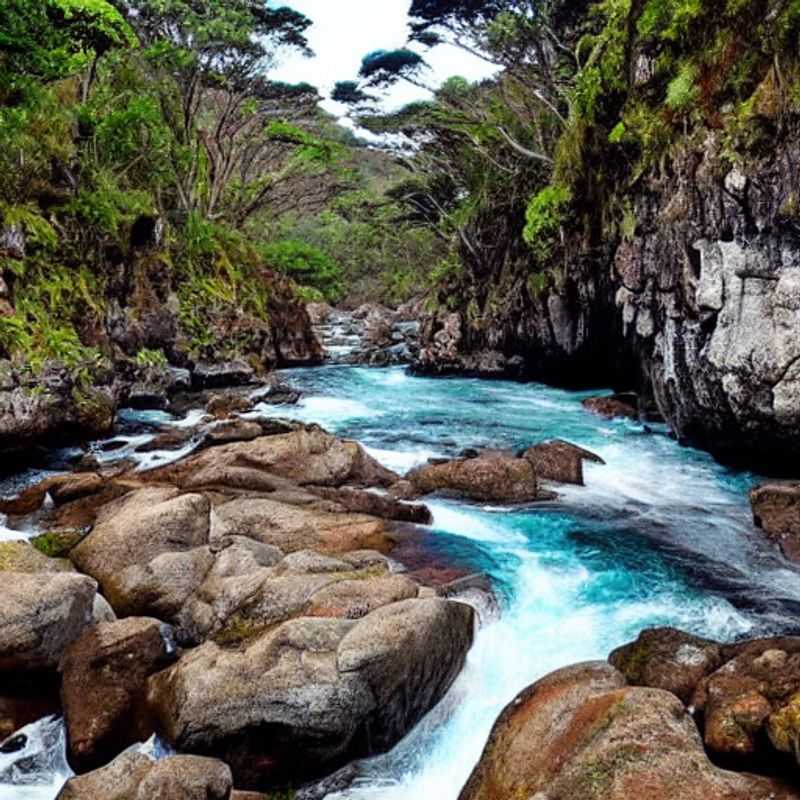
You may also like
Tsitsikamma's Trails & Treasures: A Safe & Smart Traveler's Guide
Staying Safe in Tsitsikamma: Practical Tips for an Unforgettable Trip
Exploring Tsitsikamma Safely: A Local's Perspective on Avoiding Tourist Traps
Unlocking Tsitsikamma's Secrets: Budget-Friendly Adventures & Safety First
Tsitsikamma National Park: Cultural Insights & Safety Precautions for Responsible Travel
Navigating Tsitsikamma: Essential Safety Advice & How to Experience its Authentic Charm
Wildlife Encounters & Personal Safety in Tsitsikamma: Tips from an Experienced Guide
Your Tsitsikamma Adventure: Prioritizing Safety Without Compromising the Experience
Budget Travel & Safety in Tsitsikamma: Maximizing Your Trip While Minimizing Risks
A Local's Guide to Safe & Sustainable Travel in Tsitsikamma National Park
Sawubona! Welcome to Tsitsikamma National Park, a breathtaking slice of South Africa perfect for a gap-year family adventure bridging winter and spring (roughly June to October). This time offers pleasant weather, fewer crowds than peak season, and a chance to witness the transition of the landscape.
Safety First: Tsitsikamma is generally safe, but vigilance is key. Stick to marked trails, especially when hiking. Inform someone of your hiking plans, including estimated return time. Be aware of your surroundings and keep valuables secure. Wild animals are present; maintain a safe distance and never approach or feed them. At night, stay in well-lit areas and avoid wandering alone. Report any incidents to park rangers immediately. Cell phone reception can be spotty in certain areas, so having a physical map is important.
Exploring Tsitsikamma Economically: Accommodation options range from campsites (around R250-R500 per night) to more luxurious lodges (R1000+ per night). Pack lunches and snacks to avoid expensive tourist trap eateries, which can charge significantly more. Self-catering saves a lot. Many hikes are free, though guided hikes or activities like bungee jumping or ziplining will cost extra (expect to pay R800-R1500 per person for these activities).
Food and Culture: Indulge in the local cuisine! Expect fresh seafood, hearty stews (like bobotie), and braaied (barbecued) meats. Visit local markets for affordable and authentic meals. Budget around R200-R300 per person per day for food. The Xhosa people are prominent in the area, and interacting respectfully with locals will enrich your experience. Learn a few basic Xhosa phrases like "Sawubona" (hello) and "Enkosi" (thank you). Music is integral to their culture, often incorporating traditional instruments. You’ll likely hear the sounds of nature - waves crashing, birdsong - blending with the sounds of local life.
Transportation: A rental car provides the most flexibility. Allow around R500-R800 per day for car rental, including fuel. Public transportation is limited within the park itself. Remember, driving conditions might differ from your home country, and safety should be a priority. Always adhere to speed limits and drive cautiously.
What to Expect: The landscape is stunning – dramatic cliffs, lush forests, and pristine beaches. The weather in this shoulder season is generally mild. Expect cooler mornings and evenings, with warmer temperatures during the day. Pack layers for varying conditions. Indigenous plants like fynbos are abundant, with varied flora. You may see wildlife like monkeys, birds, and perhaps even bushbuck. The atmosphere is generally relaxed, with a mix of gap-year travelers like yourselves and families enjoying a break.
Estimated Total Cost (per person for a 7-day trip): Accommodation (mid-range): R3500; Activities: R1000 (variable); Food: R2100; Transportation: R3500-R5600 (depending on rental cost and fuel consumption). Total: Approximately R10100 - R12200 per person. Remember, this is an estimate. Costs can be adjusted depending on your choices.
Remember, responsible and respectful travel makes for the best memories. Enjoy your exploration of Tsitsikamma!
